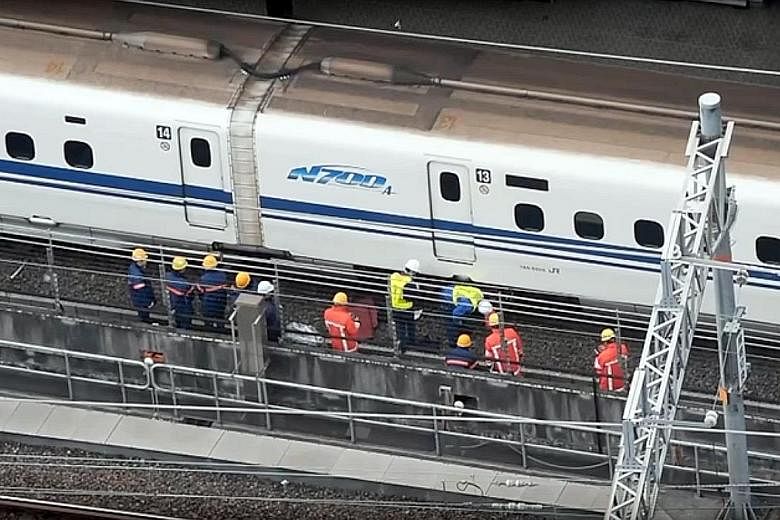Transport Minister Keiichi Ishii yesterday ordered the five Japan Railways (JR) companies that operate the shinkansen to conduct an urgent inspection of all 4,800 bullet trains in service nationwide.
The move, announced after a Cabinet meeting, came after Japan's pristine bullet train safety track record suffered its first blip.
Following the discovery of a crack and an oil leak, the Nozomi 34 was pulled from service on Monday, 3½ hours into its five-hour journey. None of the 1,000 passengers was injured, preserving Japan's record of zero casualties since the shinkansen started running in 1964.
Mr Ishii stressed that "it is gravely important to ensure the absolute safety of the shinkansen".
But even as he noted that it was the first incident of its kind, he questioned why the train - run by JR West - was allowed to continue service for three hours after the first red flag, a burning smell, had been raised by the conductor.
JR companies have come under criticism over a series of incidents.
On Wednesday, the Kodama 684 shinkansen service that plies the Nagoya-Tokyo route left the terminal station without opening its doors for the 200 passengers waiting to board. It reversed into the station, after the alarm was raised.
A spokesman for JR Central - also known as JR Tokai - said in a statement yesterday: "We must thoroughly counsel and educate all our staff to prevent a reoccurrence."
JR Central is also under scrutiny over one of its employees who is suspected to have leaked information during the tender process for a project to build emergency exits in Nagoya for a new maglev (magnetic levitation) line.
"Big four" construction company Obayashi is being probed for bid-rigging and collusion based on market-sensitive information allegedly provided by the JR Central official.
JR Central also manages the Nagoya station where the decision was made to pull Nozomi 34 from service at 5pm on Monday.
The east-bound train had started its journey at 1.33pm from Hakata station in Fukuoka in the southwest, and was bound for the main Tokyo station.
In using the term "serious incident" for the first time, the Japan Transport Safety Board said the "structural anomaly" measuring more than 10cm could have led to a deadly high-speed derailment.
The board's investigators completed their official probe on Thursday, and work is ongoing to dismantle the train at the Nagoya station so it can be safely moved to a nearby carriage base for repairs.
Given that the station has had to function all week with one platform out of service, operations have generally been delayed by up to 10 minutes, JR Central said.
One of these services was Kodama 684, which left the station two minutes later than scheduled on Wednesday, but without the waiting passengers on board.

